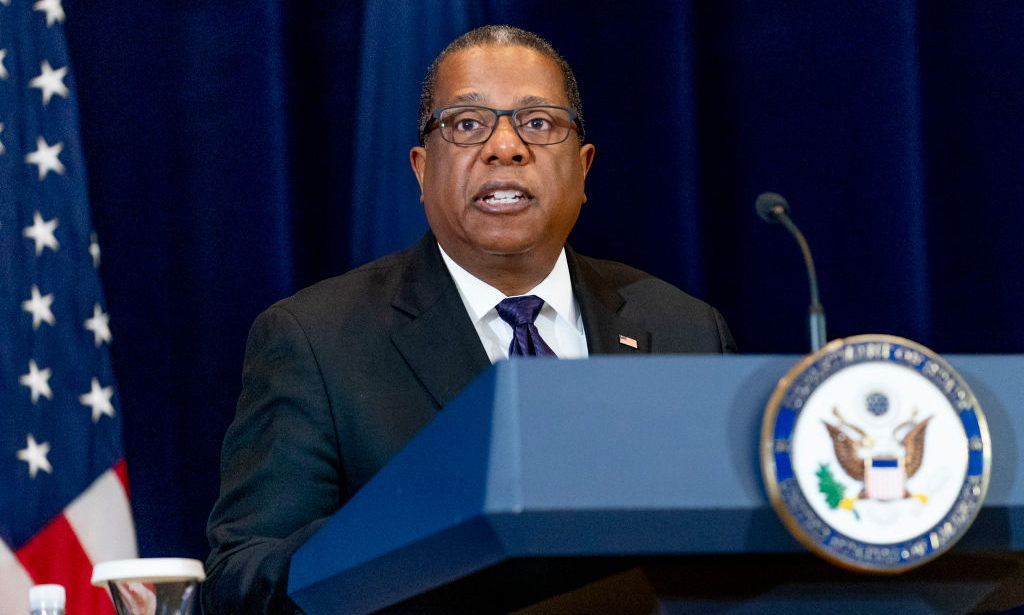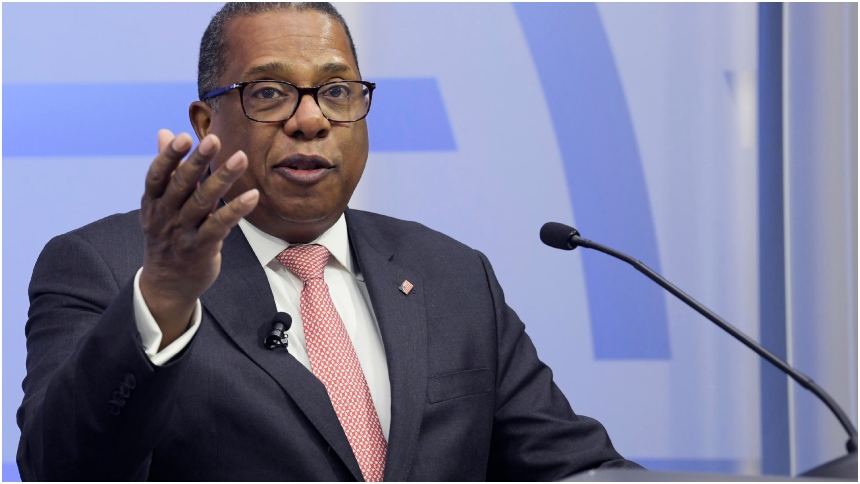Brian Nichols: The Man and His Life

Brian Nichols is a name that has become synonymous with tragedy and controversy. He is best known for his role in the 2005 Atlanta courthouse shooting, a horrific event that claimed the lives of four people and left a lasting impact on the city and the nation. To understand the events of that fateful day and the man behind them, it is crucial to delve into Brian Nichols’ life and the factors that shaped his journey.
Early Life and Education
Brian Nichols was born on June 27, 1973, in Atlanta, Georgia. His early life was marked by a challenging upbringing. He grew up in a poverty-stricken neighborhood, where he faced various hardships. His parents divorced when he was young, and he was raised primarily by his mother. He attended public schools in Atlanta but struggled academically. Nichols’ educational background was marred by disciplinary issues and difficulties in adjusting to the classroom environment.
Criminal History and Mental Health
Nichols’ criminal history began in his teenage years. He was arrested multiple times for offenses such as petty theft and drug possession. His struggles with the law continued into adulthood, and he was incarcerated for several years. While in prison, he was diagnosed with bipolar disorder, a mental health condition that can manifest in extreme mood swings and episodes of mania or depression. Nichols’ mental health challenges played a significant role in his later actions and contributed to his volatile behavior.
The Atlanta Courthouse Shooting, Brian nichols
On March 11, 2005, Brian Nichols, who was on trial for rape charges, escaped from custody at the Fulton County Courthouse in Atlanta. He managed to overpower several officers, obtaining a gun in the process. Nichols then embarked on a rampage, killing four people, including a court reporter, a sheriff’s deputy, a judge, and a federal agent. He was eventually apprehended after a four-day manhunt, and he was subsequently convicted of murder and other charges.
The Aftermath and Legacy
The Atlanta courthouse shooting sent shockwaves through the city and the nation. It raised questions about security protocols, mental health care in the criminal justice system, and the role of media coverage in influencing public perception. Nichols’ case became a focal point for discussions on these complex issues.
Brian Nichols

The 2005 Atlanta courthouse shooting, a harrowing event that shocked the nation, remains a stark reminder of the fragility of justice and the dangers that can lurk within the very institutions designed to protect us. The case of Brian Nichols, the perpetrator of this violent act, has left an indelible mark on the legal system, law enforcement, and the public’s perception of safety.
The Atlanta Courthouse Shooting, Brian nichols
The Atlanta courthouse shooting occurred on March 11, 2005, at the Fulton County Courthouse in Atlanta, Georgia. The incident unfolded in a series of tragic events that began with a routine court hearing for Nichols, who was facing charges of rape and aggravated assault. During the hearing, Nichols managed to overpower a court deputy, seizing his gun and escaping from custody.
Nichols then embarked on a rampage through the courthouse, shooting and killing four people:
- Judge Rowland Barnes, who was presiding over Nichols’s hearing
- Court deputy Cynthia Hall, who was assisting with the hearing
- Court reporter Julie Ann Brandau
- Senior court clerk Wendy Cox
Following the shootings, Nichols fled the courthouse and embarked on a four-day manhunt, during which he kidnapped a woman, Ashley Smith, who managed to escape unharmed.
The Legal Proceedings and Outcome
After a four-day manhunt, Nichols was apprehended in a suburban Atlanta home. The legal proceedings that followed were extensive and highly publicized. Nichols was charged with four counts of murder, aggravated assault, kidnapping, and escape.
His defense team argued that he was mentally ill and not responsible for his actions. However, the prosecution presented evidence that Nichols had a history of violence and was capable of planning and carrying out the shooting. Ultimately, Nichols was found guilty on all charges and sentenced to death.
Impact of the Case
The Atlanta courthouse shooting had a profound impact on the legal system, law enforcement, and public safety. The case led to significant changes in security protocols at courthouses across the country, including the implementation of metal detectors, increased security personnel, and the development of new security procedures.
The shooting also sparked a national debate about mental health and the justice system. It raised questions about the adequacy of mental health services available to individuals in the criminal justice system and the effectiveness of existing procedures for identifying and managing individuals who pose a risk to themselves or others.
“The Atlanta courthouse shooting was a wake-up call for the legal system, forcing a reevaluation of security measures and mental health services.”
Brian Nichols: The Aftermath and Legacy

The Brian Nichols case, while shocking in its brutality, also sparked a wave of introspection and debate across American society. The incident raised critical questions about mental health, gun control, and the efficacy of the criminal justice system. Its repercussions continue to resonate, shaping conversations and influencing policy discussions.
The Impact on Victims and Families
The case’s most immediate and profound impact was on the victims and their families. The victims, who endured unimaginable trauma, had to rebuild their lives in the face of profound loss and fear. The families of the victims faced the daunting task of coping with grief, seeking justice, and navigating the complexities of the legal system.
- The case’s long-term effects on the victims and their families are a testament to the enduring power of trauma. Many survivors struggle with post-traumatic stress disorder (PTSD), anxiety, and depression. The emotional and psychological toll of the event can take years to heal, and many victims may require ongoing support and therapy.
- The case also highlighted the need for comprehensive victim support services. Organizations like the National Center for Victims of Crime (NCVC) provide resources and assistance to victims of crime, including counseling, advocacy, and financial aid. The case underscores the importance of providing victims with the support they need to navigate the aftermath of trauma and rebuild their lives.
Public Discourse and Debates
The Brian Nichols case ignited a national conversation about various societal issues, including:
- Mental Health: Nichols’ history of mental illness raised questions about access to mental health services and the need for effective treatment. The case underscored the importance of early intervention and comprehensive mental health care in preventing violence.
- Gun Control: The case, involving the use of a firearm, fueled the ongoing debate over gun control in the United States. Advocates for stricter gun control measures argued that the case highlighted the dangers of easy access to firearms. Conversely, opponents of gun control argued that the case was an anomaly and that focusing on mental health issues was a more effective way to prevent violence.
- Criminal Justice Reform: The case also prompted discussions about criminal justice reform. Nichols’ escape from custody highlighted concerns about security measures in jails and prisons. The case also raised questions about the effectiveness of rehabilitation programs and the need for alternatives to incarceration.
The Legacy of the Case
The Brian Nichols case left an indelible mark on American society, serving as a stark reminder of the potential for violence and the complexities of mental health, gun control, and criminal justice. The case continues to be cited in discussions about these issues, prompting ongoing debates and efforts to address the underlying societal challenges.
- The case has also contributed to a growing awareness of the need for comprehensive mental health services. The mental health community has been working to improve access to care and develop more effective treatment options. The case has also led to increased efforts to destigmatize mental illness and promote mental health awareness.
- The case has also contributed to the ongoing debate over gun control. While the debate remains contentious, the case has helped to raise awareness of the issue and has prompted calls for action from both sides of the aisle. The case has also led to increased scrutiny of gun laws and regulations.
- Finally, the case has also contributed to a growing movement for criminal justice reform. Advocates for reform argue that the case highlights the need for systemic changes to address issues such as mass incarceration, racial disparities in the justice system, and the lack of effective rehabilitation programs.
Brian Nichols, a seasoned investor and entrepreneur, often analyzes the performance of large-cap companies, particularly those with a strong consumer base. One such company he frequently mentions is Starbucks, whose stock performance, as detailed in this sbux stock analysis, often reflects consumer sentiment and economic trends.
Nichols believes that understanding the intricacies of Starbucks’ business model is crucial for any investor seeking to navigate the complexities of the market.
Brian Nichols, the former COO of Domino’s Pizza, is known for his strategic approach to operations and his impressive track record of driving growth. This experience will likely prove valuable as he navigates the complexities of leading Starbucks, a company facing numerous challenges, including rising labor costs and increased competition.
The appointment of a new CEO, as explored in this article about the starbucks new ceo , marks a pivotal moment for the coffee giant, and Nichols’s leadership will be crucial in determining the company’s future trajectory.
